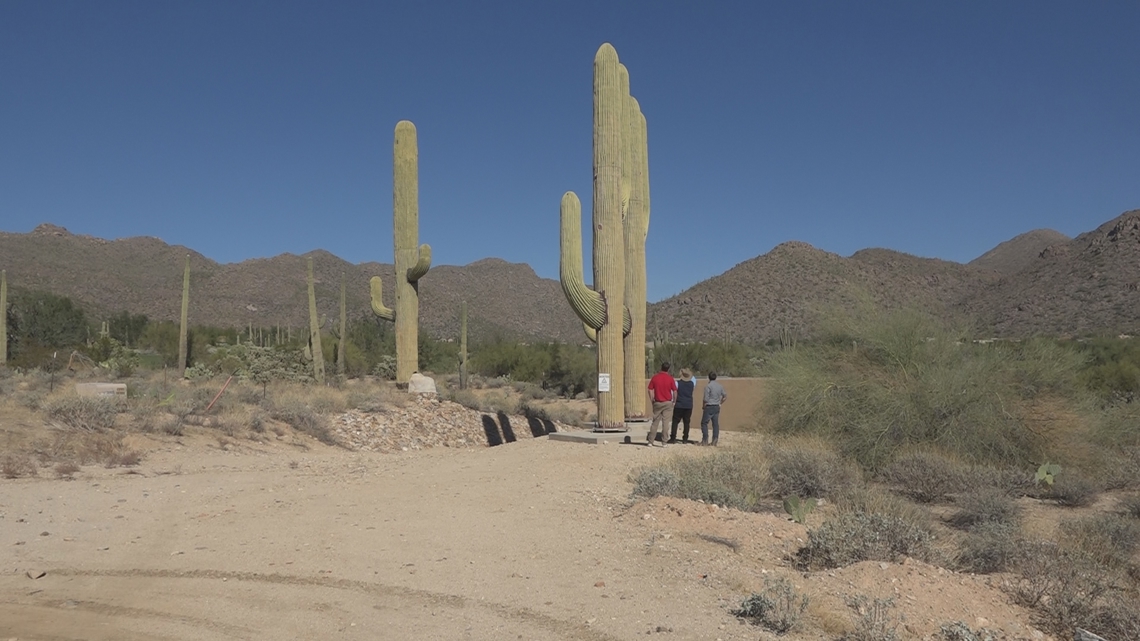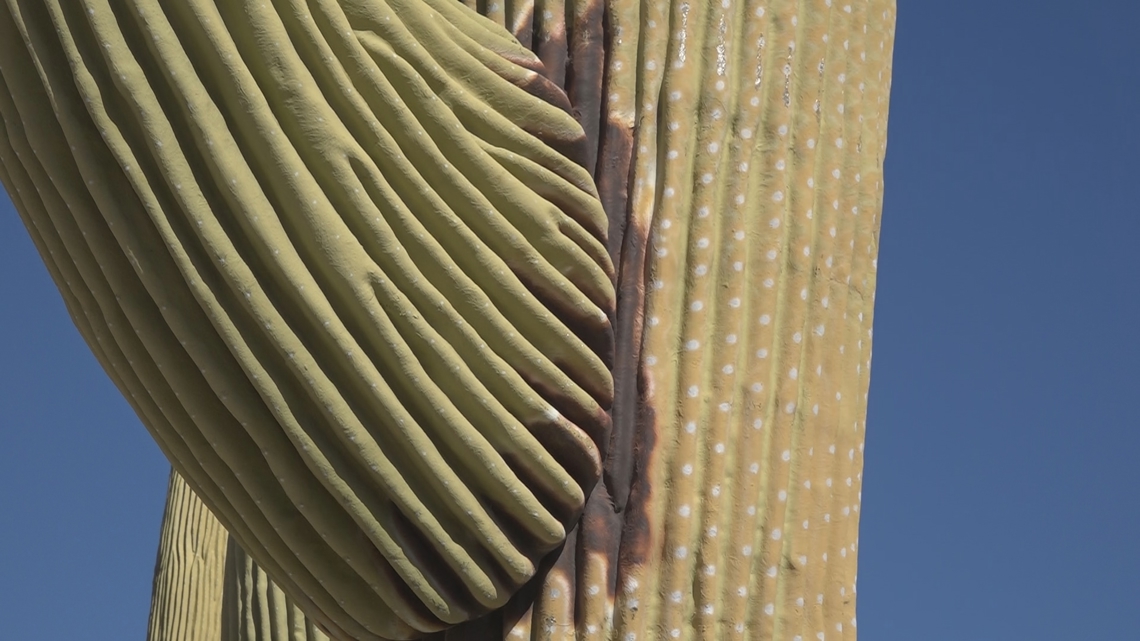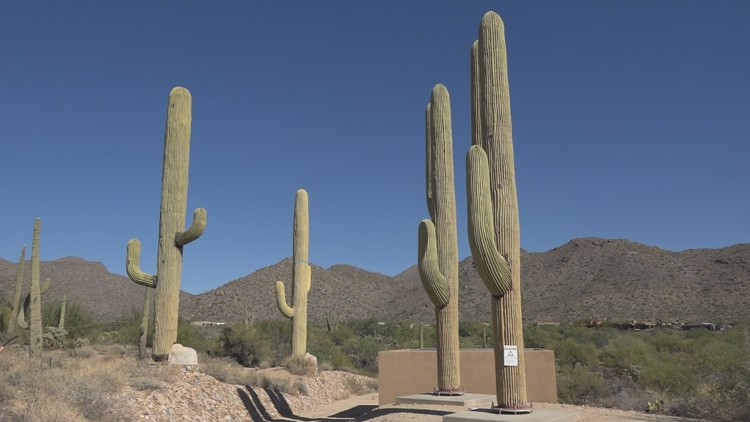TUCSON, Ariz. — Arizona is home to two types of Saguaro cacti: Those that can poke you and those that can help you make a phone call.
For some, spotting one of these imposters in the wild has become a game of “Where’s Waldo.” Others have no clue they have just walked or driven past a cell tower.
That’s the goal of the Tucson company behind more than 200 fake cacti and artificial trees around the Phoenix metro area that disguise wireless infrastructure as nature.
The company made a name for itself designing and building themed environments at zoos, aquariums and theme parks.
Wandered through the caves at Tucson’s Sonoran Desert Museum? Marveled at the Tree of Life at Disney’s Animal Kingdom in Orlando?
You can thank the Larson Company.
“We are the largest company you have never heard of,” said Mark Schmidt, director of concealment products at Valmont Telecommunications, the Larson Company’s owner. “You can see our products everywhere you look but you really don’t think about them being there.”
Valmont Industries acquired Tucson’s Larson Co., in 2019, decades after Larson created the very first pine tree cell tower in 1992 for the rural town of Monument, Colorado.
Local officials wanted the wireless infrastructure but they didn’t want it to stick out like a sore thumb.
The first “monopine” was born.
The idea caught on and as the demand for more cellular coverage increased, so did the need to conceal the towers. Many municipalities even require cell towers to be camouflaged as part of their zoning requirements.
Larson, which has since spun off as Larson Camouflage, also produces palm and eucalyptus trees.
“Really anything you can think of we can reproduce and turn it into a concealed wireless structure,” Schmidt said.
That list includes water towers, clock towers, crosses for churches, even mine shafts — these are known as architectural concealments and are often harder to pick out.
“In Mesa, there is a spring training facility there that you can see from the highway, it’s a big hexagonal structure that says Mesa on it,” Schmidt said. That's a concealed wireless structure.
The pole holding the “Old Town Scottsdale” sign next to the cowboy at Scottsdale Road and Main Street is a cell tower, too. Larson was tasked with remaking the iconic metal sign with a more radio-frequency-friendly material.
But Larson’s most unique camouflage has to be the Saguaro cacti they came up with decades ago. We met Schmidt on a dirt road just south of the Ritz-Carlton on Dove Mountain in Marana to see the cluster of cactuses nearly 30 feet tall; you feel like an ant standing under them.


From a distance, they can easily pass for the real thing.
“In order to give them a more realistic appearance, we hired a botanist,” Schmidt said. “Went out and did a study on the saguaro and helped us develop a form factor that emulated what you see in nature.”
Larson uses rust-colored paint near the base and arms of the cacti to resemble the scarring commonly found in nature. Employees at Larson even drill holes to mimic the work of the Gila woodpecker.
Schmidt said the cacti take several weeks to produce. The ribs are carved by hand and while Larson doesn’t attach needle clusters to the Saguaro, tedious hand-painted dots resemble them.


Every cactus is painted using a radio frequency-friendly material.
“Over the years, you have probably seen on your phone 3G, 4G, LTE, 5G and soon to be 6G,” Schmidt said. “Well whenever there is a change in technology, we have to ensure that the materials we use are compatible with that technology,” Schmidt said.
The Sonoran Desert can be a harsh, hostile place. But in the age of connectivity, even the most stoic saguaro might have a few megabits to share.



